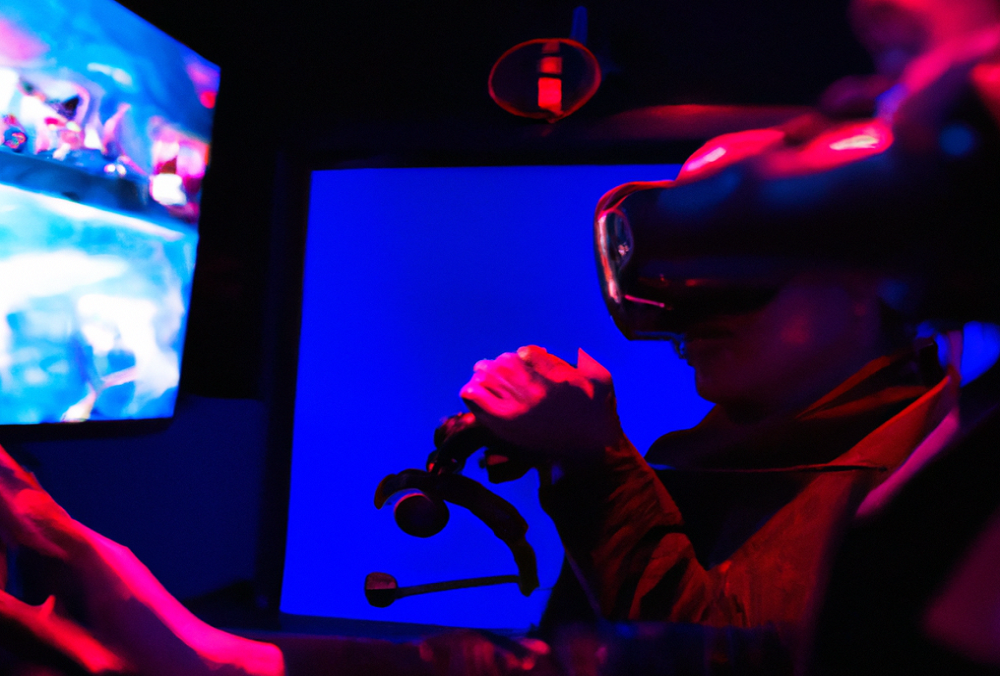Exploring the Potential of Procedural Level Generation on Player Experience
Procedural level generation is a powerful tool used in video games to create levels dynamically using algorithms and randomness. This method allows for a virtually limitless number of unique and unpredictable levels, making the game more interesting and engaging for players. In this article, we will introduce the concept of procedural level generation and how it is being used in the gaming industry.
What is Procedural Level Generation?
Procedural level generation is a technique used in video games to generate levels dynamically, instead of creating them manually. This method uses algorithms and randomness to create unique levels each time the game is played. This can include anything from randomly generated terrain, to enemy placement, to puzzle elements. The goal of procedural level generation is to provide a fresh and exciting experience for the player, with a virtually limitless number of possibilities.
Advantages of Procedural Level Generation
1. Variety:
The variety provided by procedural level generation is one of its biggest advantages. With this technique, the game can generate unique and unpredictable challenges every time it is played, making the experience fresh and exciting for the player. The player never knows what to expect and is always presented with a new and exciting challenge. This variety keeps the game engaging and prevents it from becoming repetitive or boring.
Procedural level generation allows developers to create games with a much larger scope than traditional, hand-made levels. Rather than having to manually create each level, developers can create a set of rules and parameters for the algorithm to follow, resulting in an endless number of levels. This not only saves time but also results in a much more dynamic and diverse gaming experience for the player. Procedural level generation also opens up the opportunity for players to generate their own custom levels. This allows for a much more personalized gaming experience, as players can create levels that suit their specific play style or preferences. This also adds another layer of replayability to the game, as players can continue to create new and unique levels to play through.
2. Replayability:
Procedural level generation also increases the replayability of a game. With each play-through, the player can experience different levels and challenges, keeping the game fresh and exciting. This provides players with a reason to revisit the game and play it again, as they know that each time they play, they will be presented with a new experience.
Procedural level generation allows for different play styles to be accommodated. For example, if a player wants to focus on exploration and discovery, the game can generate levels that are more open and allow for this type of play. Conversely, if a player wants a more combat-focused experience, the game can generate levels with more enemies and challenges. This level of adaptability provides players with a much more personalized and satisfying gaming experience.
Procedural level generation can make games more engaging by creating a sense of immersion. Instead of feeling like they are following a predetermined set of levels, players can feel like they are exploring a dynamic and ever-changing world. This fosters a stronger connection between the player and the game, resulting in a more memorable and enjoyable experience.
3. Customization
Procedural level generation opens up the opportunity for players to customize their gaming experience in a number of ways. For example, players can choose the level of difficulty they want to play at, allowing them to tailor the experience to their skill level. Additionally, players can also choose the types of levels they want to play, such as levels with more combat, exploration, or puzzle elements.
Another aspect of customization is the ability for players to generate their own levels. With procedural level generation, players can create their own custom levels that suit their specific play style or preferences. This not only provides a much more personalized gaming experience, but it also adds another layer of replayability to the game, as players can continue to create new and unique levels to play through.
Procedural level generation gives game developers the opportunity to create games that can evolve and transform with time. As an illustration, a game can be designed to generate novel levels and obstacles as the player advances, guaranteeing that the game is always novel and thrilling.
4. Cost and Time-Efficiency
From a developer's perspective, procedural level generation offers a number of benefits, one of the biggest being cost and time-efficiency. Rather than having to manually create each level, developers can create a set of rules and parameters for the algorithm to follow, resulting in an endless number of levels. This not only saves time but also reduces the overall cost of development, as less resources and manpower are required to create a large number of levels.
Procedural level generation allows developers to create games with a much larger scope than traditional, hand-made levels. The ability to generate an endless number of levels means that developers can create games with a much larger world, with more content and possibilities for the player to explore. This results in a much more dynamic and diverse gaming experience for the player.
This technology enables developers to make swift and effortless changes to the game. Instead of having to manually modify each level, developers can modify the algorithm, leading to changes throughout the game. This permits much faster iteration and the capacity to promptly make changes based on player feedback.
5. Dynamic and Unpredictable
Another advantage of procedural level generation is the ability to create levels that are dynamic and unpredictable. This means that players can never know exactly what to expect, keeping the game fresh and exciting.
Tthis unpredictability adds a sense of discovery and exploration, as players can never be sure what they will find around the next corner.
Procedural level generation also allows for unexpected events to occur within the game. For example, a random event could occur, such as a sudden storm or ambush, adding another layer of unpredictability and excitement to the game.
Procedural level generation also enables levels to transform and evolve with time. For instance, a game can be designed to generate new levels and challenges as the player advances, guaranteeing that the game is always fresh and exciting.
6. Scalability
Procedural level generation is highly scalable, allowing it to be used in a wide range of games and genres. From fast-paced action games to slow-paced strategy games, procedural level generation can be adapted to suit the needs of the game and provide a unique and exciting experience for the player. Procedural level generation can also be used to generate different types of levels, from vast open-world environments to small, focused levels. This versatility makes it a valuable tool for developers, as it can be used in a wide range of games and genres.
Procedural level generation can be employed to generate multiplayer levels, providing a distinctive and unpredictable experience for each player. The capability to generate diverse levels for each player guarantees that no two players will encounter the exact same experience, introducing another layer of replayability and excitement to the game.
7. Increased Replayability
Procedural level generation increases the replayability of a game, as players can experience new and unique levels each time they play. This not only provides a much more engaging and dynamic gaming experience, but it also adds a sense of longevity to the game, as players will want to continue playing in order to experience all the different levels that the game has to offer.
Another aspect of increased replayability is the ability for players to generate their own levels. With procedural level generation, players can create their own custom levels that suit their specific play style or preferences. This not only provides a much more personalized gaming experience, but it also adds another layer of replayability to the game, as players can continue to create new and unique levels to play through.
Moreover, procedural level generation also allows for random events and challenges to occur within the game, adding another layer of unpredictability and excitement. Players never know exactly what to expect, keeping the game fresh and exciting each time they play.
8. Improved Performance
In addition to the benefits to the player and developer, procedural level generation can also improve the performance of the game. The ability to generate levels on the fly, rather than having to pre-load them, results in less strain on the hardware and a smoother gaming experience. Procedural level generation also allows for levels to be generated in real-time, allowing for a more immersive and seamless gaming experience. This not only improves the performance of the game, but it also adds another layer of excitement and unpredictability, as levels can change and evolve in real-time.
Procedural level generation allows for levels to be generated with the specific hardware in mind. This means that levels can be optimized for each individual device, resulting in improved performance and a smoother gaming experience for the player.
9. Better Balancing
Procedural level generation offers the ability to improve game balance. Instead of manually balancing each level, developers can program the algorithm to generate levels that are well-balanced, providing a fair and challenging experience for the player.
Moreover, procedural level generation can be used to generate levels that are customized to the player's skill level. For instance, a player could select the difficulty level they wish to play at, enabling the algorithm to generate levels that are appropriate for their skill level.
Procedural level generation also enables dynamic balancing, as levels can evolve and change over time. This ensures that the game continues to be challenging and exciting for the player, even as their skills improve.
Disadvantages of Procedural Level Generation
Lack of Control:
One of the main disadvantages of procedural level generation is the lack of control that the developer has over the levels generated. With the algorithm generating the levels automatically, there is less control over the design, layout, and overall feel of the levels. There may be issues with the generated levels, such as levels that are too easy or too difficult, levels that are too similar to one another, or levels that are simply not fun to play. This lack of control can result in a less enjoyable gaming experience for the player.
There may also be issues with the algorithm itself, such as bugs or glitches that result in poorly generated levels. This lack of control can be frustrating for both the developer and the player, and can result in a negative impact on the overall game experience.
Technical Challenges
Another disadvantage of procedural level generation is the technical challenges that it presents. Generating levels automatically is a complex and technical process, requiring a high level of skill and expertise to get it right.
There may be issues with the algorithm itself, such as bugs or glitches that result in poorly generated levels. This can be time-consuming and costly for the developer to fix, and can result in a negative impact on the overall game experience.
Procedural level generation may encounter compatibility issues with various devices. In order for the algorithm to work effectively, it must be optimized for each specific device. This can pose a major challenge for developers and lead to a less than optimal gaming experience for the player.
Decreased Quality
Decreased quality of the levels generated is another disadvantage of procedural level generation. With the algorithm generating the levels automatically, there is a risk that the levels will not be as well designed, detailed, or engaging as levels that are created manually by a skilled designer.
Procedural level generation may also have some drawbacks related to the visual and aesthetic quality of the levels. Due to the lack of manual input, the algorithm may not always generate levels that are visually pleasing or consistent with the game's aesthetics. This can result in a less immersive and enjoyable gaming experience for the player, affecting the overall quality of the game.
Finally, there may also be issues with the level structure and layout, such as levels that are too confusing or difficult to navigate. This can result in a less enjoyable gaming experience for the player, and can have a negative impact on the overall game experience.
Decreased Immersion
Procedural level generation may result in decreased immersion for the player since the algorithm automatically generates the levels, which may not be as immersive or believable as levels created by skilled designers manually. This may lead to a less engaging experience for the player, as they may feel that the levels lack depth and complexity.
Additionally, there may be issues with the consistency and coherence of the levels, as the algorithm may not generate levels that fit well within the game world and story. This can result in a less enjoyable gaming experience for the player, and can have a negative impact on the overall game experience.
Dependence on Algorithm
Lastly, procedural level generation’s dependence on the algorithm to generate levels can be another disadvantage. If the algorithm is not well-designed or is not functioning properly, it can result in poorly generated levels that negatively impact the overall game experience.
Changes to the algorithm may impact the game's balance or difficulty, which can also have a negative impact on the player experience. In addition, some players may prefer handcrafted levels, which offer a unique and intentional experience that cannot be replicated by an algorithm. This could result in a portion of the player base being dissatisfied with the game's levels and potentially losing interest in the game over time.
There is also the risk that the algorithm may become outdated or obsolete as technology advances, resulting in a need for the developer to constantly update and maintain the algorithm in order for it to work properly. This can be a significant burden for the developer, and can result in a negative impact on the overall game experience for the player.
Final Thoughts
Procedural level generation is a powerful tool in video game development that creates levels dynamically using algorithms and randomness. This technique provides a virtually limitless number of unique and unpredictable levels, making the game more interesting and engaging for players. Procedural level generation offers a number of advantages, including variety, replayability, customization, cost and time-efficiency, dynamic and unpredictable levels, and the ability to transform and evolve with time. These benefits not only provide a more satisfying gaming experience for the player but also result in a more efficient and cost-effective development process for the developer. Therefore, procedural level generation is becoming increasingly popular in the gaming industry and is likely to continue to be used in future game development.






